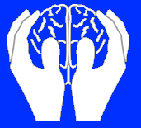Публикуваме тази статия с разрешението на Mind Alive Inc.
The following excerpt is from the Appendices of "The Rediscovery of Audio Visual Entrainment Technology" by Dave Siever, C.E.T. copyright 1997
Outcome of Medical Methods, Audio-Visual Entrainment (AVE) and Nutritional Supplementation for the Treatment of Fibromyalgia Syndrome
Kathy Berg, Dave Siever, C.E.T., Horst Mueller, Ph.D., & Donald Seibel, M.D.
Introduction
Dominant in 3 - 5% of women, Fibromyalgia Syndrome (FMS) is characterized by physiological and psychological associations. The most common physical symptoms are muscular pain, chronic fatigue, and sleep problems. These are seen in almost 100% of FMS sufferers. Between 70 and 100% of FMS sufferers experience psychological symptoms of depression and cognition problems or "fibro-fog." Anxiety is experienced by 24% of sufferers.
Currently, treatments to lower FMS symptoms are varied. Medical methods of pharmaceutical intervention, prolotherapy, trigger point injection, neural facial therapy, and osteopathic therapy are presently used to lower FMS pain. Nutritional supplementation include anti-oxidants, Vitamins C, A and E, which are used to help build the immune system and block cell-damaging free radicals. A comparison of brainwave entrainment via audio-visual stimulation/entrainment (AVE), medical/alternative methods, and nutritional supplementation as individual or combined treatments have yet to be studied.
Method
Three different treatments were tested to increase quality of life to people with diagnosed FMS. Forty-nine participants were randomly selected into three groups. Table 1 shows the descriptive data. The participants received the following treatments; 1) DAVID ParadiseTM Audio-Visual Entrainment (AVE) device using blue-tinted semi-sine wave white-light and isochronic tones (AVE group), 2) standard and alternative medical methods such as prolotherapy, neural facial therapy, acupuncture and/or osteopathic (Med/Alt group), and 3) nutritional supplements consisting of amino acids, vitamins, minerals, and herbs (Nutritional group).
Table 1

For the first month, the participants received only one of the three treatments (individual group). During the second month, the three groups received all three treatments simultaneously (combined group). The test measures were administered at the pre-study, post-individual treatment and post-combined treatment times of the study.
Questionnaires represented the pre-test, post-individual test, and post-combined test data results. Depression was indicated on the SCL-90-R. The Anxiety Sensitivity Index (ASI) represented anxiety. Dr. Horst Mueller's revised SCL-90-R's represented the other variables.
Results
The data following the single treatment and combined treatments was assessed to determine all those who had any improvement in the test measures following that particular treatment. Table 2 shows the treatment that helped the highest percentage of participants, and the percentage of those who benefited from it. For instance, the medical group indicated more improvement in cognition (50%) than did the AVE or Nutrition group following individual treatment. Therefore, less than 50% of those in the AVE and the nutritional group would have indicated cognitive improvement.
Table 2

All groups showed decreased anxiety. The Control Group showed increases in anxiety (9%), sleep (31%), pain (29%) and depression (27%). In terms of what was statistically significant, the single treatment data suggests the Medical Group lowered anxiety the most. The AVE Group, in the combination of all three treatments, lowered anxiety, pain and fatigue the most, shown in Table 3. Keep in mind that the AVE and nutrition groups were both smaller than the medical group and would require greater improvements to reach significance. The ASI normative scores are the following: Male 15 ± 8, Females 20 ± 10.
Table 3

During the study, most participants used alpha stimulation in the afternoon to reduce anxiety and pain. They also used them in the evening to relax prior to retiring to bed. Delta sessions were used while in bed. Participants either removed the eyesets and headphones when the session ended or fell asleep with the DAVID AVE unit running. The participants preferred the alpha, theta and delta sessions to be longer than 30 minutes. Beta sessions were used immediately upon awakening in the morning to assist in clearing fog and increasing alertness. The participants preferred the beta sessions to be shorter than 30 minutes. Although the participants were encouraged to use the beta sessions (FMS being a slow brainwave disorder), most participants found beta stimulation interfered with their progress and chose to abstain. The distribution of the frequencies preferred is shown in Table 4.
Table 4

The medical treatment participants chose acupuncture as the most popular medical method. This procedure may have decreased depression in both the Medical Group and the AVE Group.
Magnesium was preferred to be the most popular nutritional supplement. Supplements were chosen on the basis of Dr. Seibel's nutrition FMS list, affordability, and digestibility. As a result, every participant's nutritional list was unique. To conclude, there were multiple confound variables to isolate magnesium's effect to FMS symptoms.
Conclusion
Administering certain treatment steps may show positive results. As a single treatment, the AVE Group either improved or stayed the same in the tested variables. When exposed to all three treatments, the AVE Group improved in all the tested variables. The Medical and Nutrition Groups declined in one or more of the variables in both the single treatment and the combination of all three treatments. These results suggest the DAVID AVE unit could be used first as a single treatment followed by the introduction of other treatments. The DAVID unit could be used to treat anxiousness, pain and fatigue while other specific treatments could be used to treat other variables








